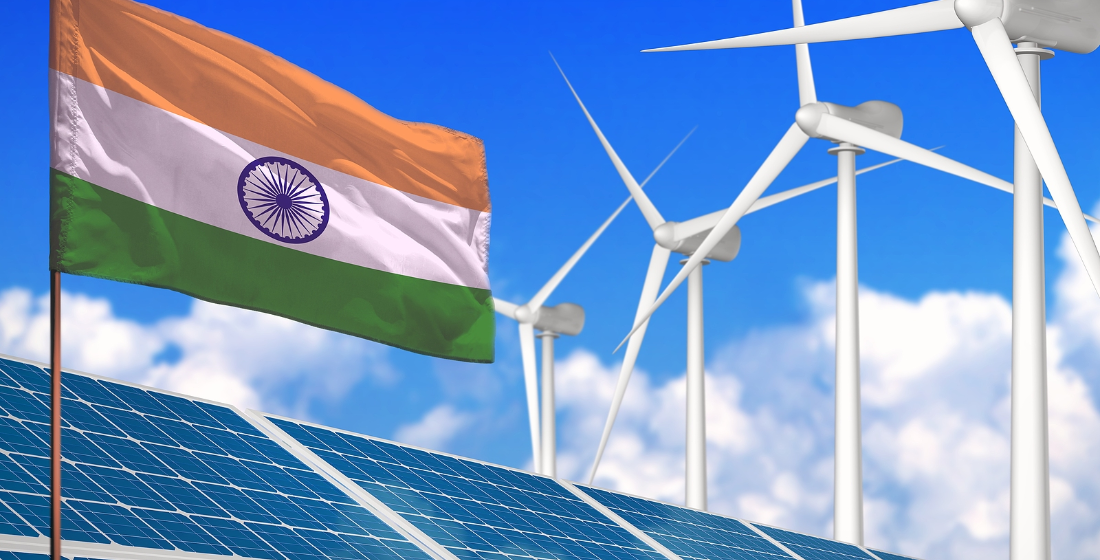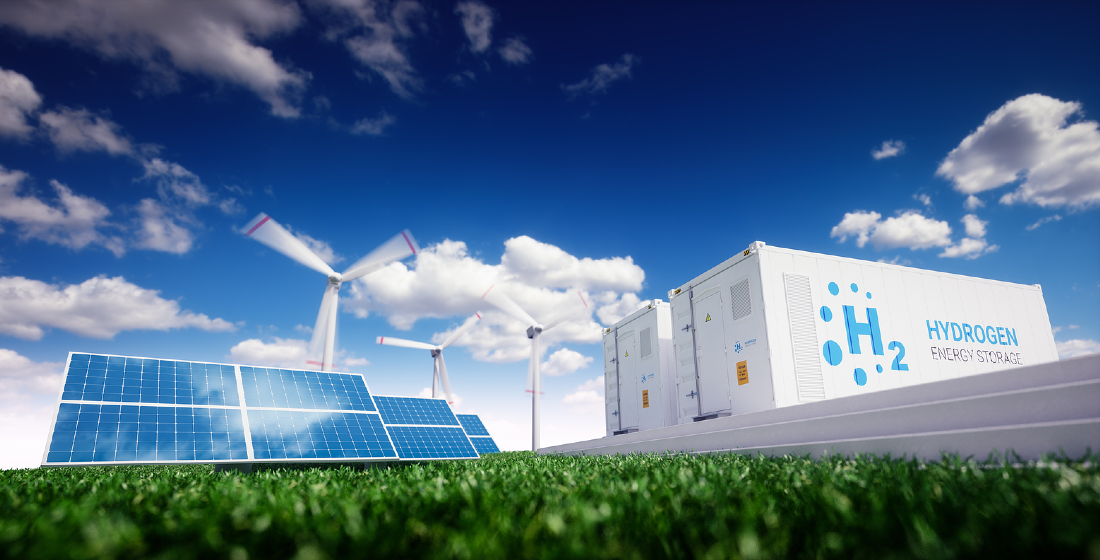Facilitating India’s ambitious renewables targets
The Indian renewables sector has been primarily domestically financed to date. With the government targeting 450GW of renewable capacity by 2030, regulatory moves are being made to make it easier for international debt and equity to get into the market – but more could still be done.

India has set some of the most ambitious renewable energy targets in the world. It is aiming to install 175GW of renewable energy generation capacity by 2022 and 450GW by 2030. India’s installed renewable power generation capacity has increased at a record pace over the past few years - increasing 226% in the last 5 years. India had installed 89.5GW of renewables capacity as at the end of 2019, according to India’s Ministry of New and Renewable Energy’s 2019 annual report. This includes approx. 34GW of solar and 25GW of wind, putting it in fourth place with installed renewable energy capacity, according to Statista’s global rankings. India is ranked seventh in EY’s 2020 Renewable Energy Country Attractiveness Index.
While the overarching target of 175GW by 2022 or 450GW by 2030 may be missed, in no small part due to COVID-19 related slowdown and disruptions, it would be an impressive feat if even 50%-75% of these targets are achieved. In any event, India’s renewable energy programme has already led to the reduction in installation of, and generation from, thermal energy sources which helps meet Paris Agreement commitments.
India has pledged that 40% of its installed electricity capacity will come from renewable sources by 2030 as a part of its Nationally Determined Contribution (NDC) to the Paris Agreement. This is estimated to cost $150 billion, much of which is anticipated to come from private investors.
Given the size of India’s energy requirements and its role as one of the largest Green House Gas (GHG) emitters (which is still quite low on a per capita basis), the success of India’s renewable energy programme is also critical for meeting the Paris Agreement objectives of keeping the global temperature rise this century well below 2 degrees Celsius above pre-industrial levels, and to pursue efforts to limit the temperature increase even further to 1.5 degrees Celsius.
Indian local financing constraints and direction of travel
Given the size, scope and ambition of the programme, external financing (both debt and equity) will be critical for its success (and of the Paris Agreement). The Indian renewable energy programme has been largely financed from domestic sources to date. However, this is changing. International debt and equity investments in India’s renewable energy sector is increasing, as demonstrated by several recent cross-border M&A, debt issuances and other financings involving Indian renewable energy companies and projects.
Equity story
India allows foreign direct investment up to 100% in the renewable energy sector without any prior approval from the Indian government.
The Indian renewables equity opportunity has already attracted investments from international investors, pension funds, sovereign wealth funds and private equity such as Total, BP Lightsource, EDF, KKR, Actis, Temasek, Mubadala and Brookfields, to name a few. This trend is likely to continue for the reasons highlighted below.
In the latest round of power auctions in India which received an overwhelming response with bids for more than 5GW, five out of six winning bids were from international renewable companies – Spain's Solarpack, Italy's Enel Green Power, Germany's IB Vogt, Canada’s AMP Energy, New York’s Eden Renewables and UK’s CDC-backed Ayana Renewables. India’s largest renewable energy developer, Renew Power (which is backed by Goldman Sachs, Abu Dhabi Investment Authority and Global Environment Fund), was the sixth winner.
Domestic Indian renewable energy companies have also reached a significant size and maturity and have built up extensive experience of developing and operating renewable energy assets, creating further opportunities for absorbing investments and driving growth.
Adani Green Energy has also recently won a tender by the Solar Energy Corporation of India (SECI) for up to 8GW of manufacturing-linked solar capacity. The tender involves 8GW of solar power linked to setting up 2GW of PV solar cell and module manufacturing capacity, with Adani Green Energy winning all the capacity.
Debt piece
There have been bond issues from domestic and international investors over the years. Innovative green bonds and masala bonds together with ‘vanilla’ debt facilities have been important debt instruments that are expected to continue. Debt issuances from ReNew Power, Azure Power and others have also attracted significant interest from international investors.
Infrastructure debt funds are playing an active role in refinancing operating renewable energy projects. This opportunity is likely to grow further.
Indian ECB market
The Indian Central Bank (Reserve Bank of India (RBI)) regulates the raising of external debt (referred to as external commercial borrowing (ECBs)) by Indian companies. ECBs are essentially debt availed by Indian entities from non-resident lenders in foreign currencies. ECBs may comprise many forms including commercial loans, buyers’ credit, suppliers’ credit, securitized instruments such as notes and bonds including green bonds.
The changes to India’s ECB regulations in 2019 have made it relatively easier for international debt providers to access the Indian ECB market.
Opportunities for international investors
Several factors create an attractive opportunity for international debt and equity investors in the Indian renewables market:
- The Indian domestic debt costs remain relatively high compared to the international debt markets, even taking into account the cost of hedging Indian rupee which has become more stable and predictable over the years. The pricing differential has, therefore, become material.
- Yields in the international debt markets remain depressed.
- International appetite for high-yielding debt remains strong.
- A lot of ‘dry powder’ has been building up, especially, for Environmental, Social and Governance (ESG) or green-focused opportunities – both, in debt and equity space.
- Increasing energy transition from fossil to renewable energy sources around the world is leading to more investors and companies scouting for significant international renewable energy opportunities. India remains a key market where renewable energy opportunities (both, existing assets and the pipeline) are available at a scale that large investors and companies prefer.
- The robust Indian renewable energy programme will continue to create further demand for capital for renewable energy projects.
- India’s diversity by geography, fuel type and offtakers mitigates projects, financial and climate risks.
- The majority of India’s renewable energy assets benefit from long-term power purchase agreements (PPA), which offer tariff visibility and certainty.
A few policy constraints remain
RBI has relaxed the ECB regulations over the years. However, a few policy constraints remain. One could argue that ECB regulations remain overly prescriptive in certain respects. For example, the RBI requires ECBs to conform to certain parameters such as minimum maturity, permitted and non-permitted end-uses, tenor, maximum all-in-cost ceiling (includes the rate of interest, other fees, expenses, guarantee fees), minimum credit ratings of the borrowers, to name a few.
While there are sound reasons for India’s policy controls over the ECB market, given (i) the dynamics of the international debt markets including ever-changing credit and others risks and operating environment, (ii) the nature of financial instruments, (iii) the life of a ‘typical’ transaction, (iv) capital requirements of the Indian domestic market, and (v) lack of availability of low cost of capital in the domestic Indian market, it makes eminent sense for India to further relax its ECB regulations.
The all-in-cost ceiling and minimum credit rating requirements impose an artificial restriction on the growth and development of the Indian debt market, in particular, the sub-investment grade market. This is all the more relevant given the global capital available for investing in the non-investment grade market.
In our view, pricing and other commercial terms should be left to the market (and willing lender and willing borrower) to decide. This will help address India’s growing capital requirements for renewable energy projects.
There are other issues such as attempts by the State of Andhra Pradesh to renegotiate its PPAs (the federal Ministry of New and Renewable Energy is strongly opposed to any changes in the signed PPAs), payment delays by, and creditworthiness of, certain state offtakers and frequent policy changes.
A number of these issues are being addressed by the government. For example, land and associated infrastructure issues have been mitigated by the government providing dedicated solar parks, concerns around offtakers’ credit risk are being mitigated by establishment of the new federal government-backed offtakers with a stronger credit profile, other internal policy measures have been put in place to improve the creditworthiness of the offtakers and reduce payment delays.
Compulsory renewable purchase obligations and ‘must-run’ status (i.e. offtakers cannot curtail power procurement from renewable sources except in case of an emergency) of renewable energy projects are being more strictly enforced. The energy regulators and tribunals remain independent with a robust appeals process.
As India moves forward with its ambitious renewable energy programme, the attractive investment opportunity for foreign debt and equity investors has increased dramatically. The Indian government continues to address the concerns of the various stakeholders to make the market more accessible and stable, which can only be seen as a positive for the wider global fight against climate change.






